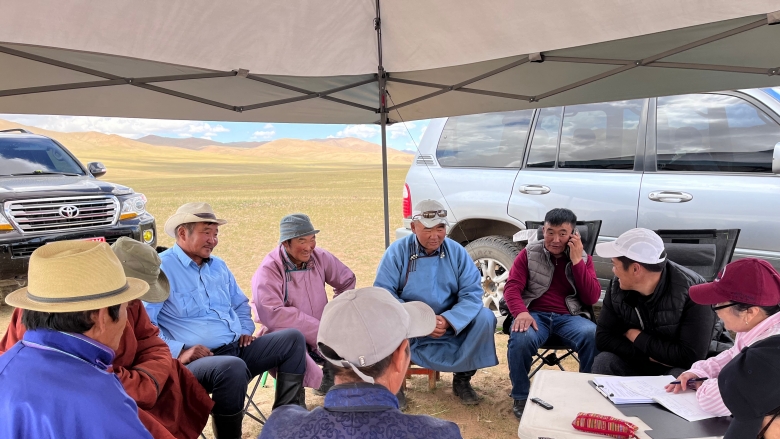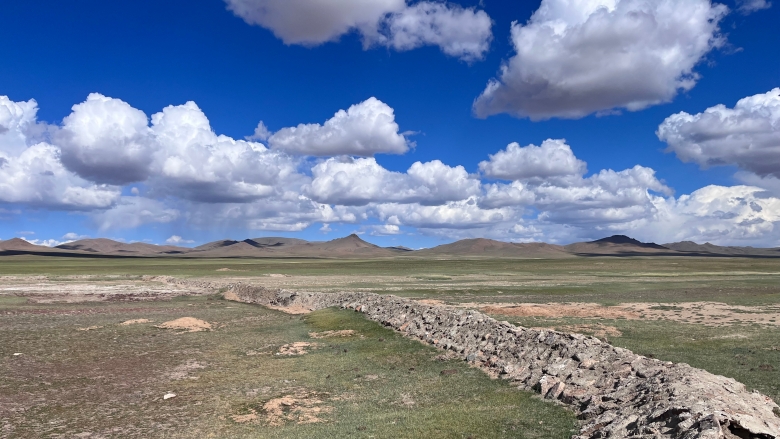Batkhuyag Sukhbaatar has been herding sheep since the early 1990s in Shiluustei, a district of Zavkhan province in western Mongolia, located 1,200 km west of the capital city, Ulaanbaatar.
In his more than 30 years of herding, Batkhuyag has seen rainfall and snow decline and noticed how this has changed the pastures where he grazes his herds.
“Especially since 2000, things have changed dramatically. Plants that used to grow 20 years ago are no longer growing. We’ve seen almost a 30% reduction in the number of plants,” said Batkhuyag. “Summers now bring less rain and more dust storms, and weather conditions have become extreme,” he added.
Mongolia’s 2°C increase in temperature and decline in rainfall over the past 70 years have created a vicious cycle for nomadic herders, who comprise nearly 30% of the population. As pasturelands have become less productive, herders have increased the numbers of their livestock to make up for productivity losses. This in turn has put more pressure on natural resources, further reducing livestock productivity and ultimately hurting herder incomes.
Discussions lead to a solution
Concerned about the effects of the changing climate, Batkhuyag met with fellow herders, local government staff, and wildlife conservationists to discuss how to adapt. They explored ways to secure water for livestock and pastures in an environmentally sustainable fashion. Collectively, they decided that harvesting water runoff from the main pasture area during the spring snow melt and summer rains would be a simple but effective way to do this.
The initiative was welcomed by the local authorities and discussed at community meetings organized through the Local Development Fund (LDF), which is supported by the World Bank’s Sustainable Livelihoods Project. The LDF is a national platform for capital investments at the district level that is based on participatory decision-making and social accountability.
In the past, pasture watering was largely done through groundwater wells, while surface water harvesting was considered a less attractive option. However, as the groundwater table has dropped due to climate change, building wells has become expensive, making water harvesting one of the most efficient options in rural areas. Water harvesting is now acknowledged as a solution to water scarcity in the country’s long-term development plan, Vision - 2050.
The herders’ proposal to build water harvesting infrastructure received broad local support and was initiated in the summer of 2022 with financing from the LDF and the livestock head tax. Batkhuyag said being involved in the project from early discussions about solutions through to participating in building the first regional water harvesting scheme was a positive experience.
“Herders want to contribute more to resolving issues they are facing,” he said.


